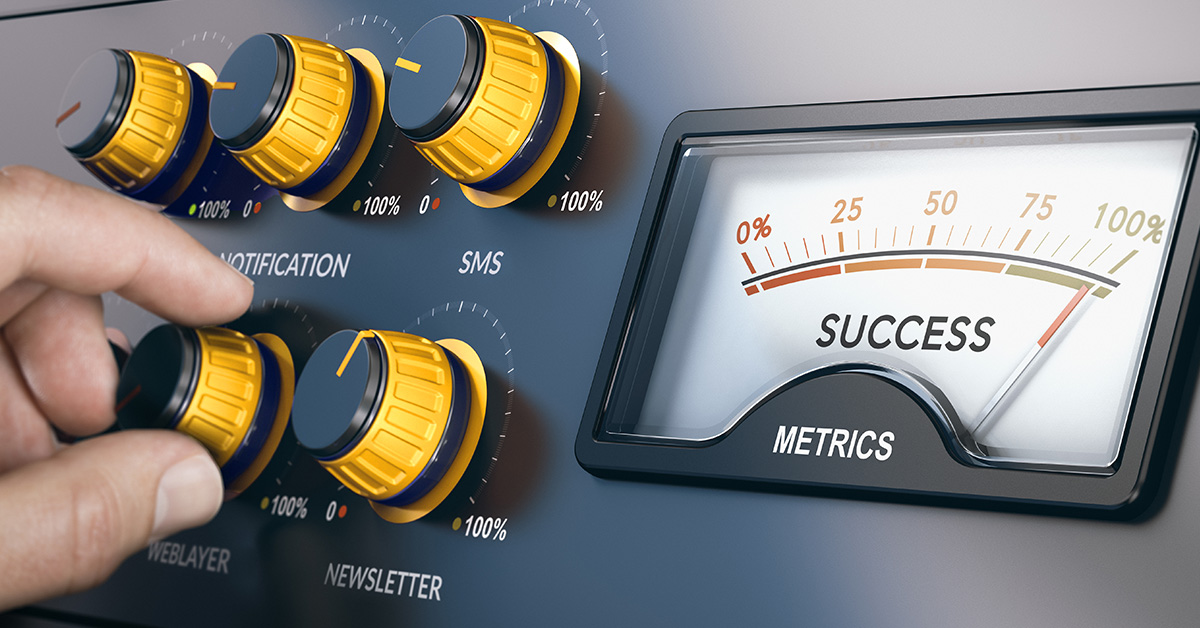The customer experience begins at the first impression. Sometimes, that’s through an engaging Instagram post. Other times, it’s by landing serendipitously on your website. Because there are so many ways for customers to interact with your brand, an omnichannel presence has become more important than ever.
In the real world, our environment and audience play a big role in how we communicate. If you’re at a library, you’re communicating in a different style than at the local pub. How you talk to a business executive isn’t how you talk to your best friend from college.
Likewise, it’s important for brands to consider this kind of context when publishing content across digital media. Each platform has its own type of audience and environment. Understanding how to communicate on each channel is the key to ideal customer communication in 2019.
People aren’t looking for multichannel communication, which focuses on delivering your brand’s content to a customer’s preferred channel. Instead, we’re moving into an omnichannel world. Customers are looking for businesses who are willing to communicate with them differently across every channel they use.
For example, customers may want to interact with you through Instagram, email, and SMS support. An omnichannel company seeks to provide seamless communication across each of these channels. Tools like Exponea can help you with the technical aspects of an omnichannel experience. However, it’s a deeper understanding of what content works for each channel that can set your company apart from the competition.
Today, we’re going to dive into the specifics of creating contextual content for each marketing channel. The days of sharing the same creative and copy across all platforms are over. If companies want to stand out, attract attention, and cultivate a great customer experience, they need to strive for ideal communication.
Table of Contents
Key Takeaways
- Effective communication is key to fostering customer loyalty
- Each channel has its own communication style. Understanding what type of content works where can make a huge impact on your customer experience.
- People don’t want a multichannel experience, they want an omnichannel one.
- Create channel-specific content that highlights its uniqueness.
- An automated omni-channel strategy makes sure your communications are sent
- It’s important for your team to understand the nuances for each channel. A proper channel communication strategy can support your team on how to interact, depending on the platform.
- Ideal communication goes beyond appearances. It’s not just about making your marketing look better, it’ll actually work better too.
- In order to cultivate a truly omnichannel experience for customers, you’ve got to communicate contextually on each channel. It’s not about content distribution, it’s about customer touchpoints.
Listen to this article
How to Create Channel-Specific Content
It’s really tempting to plaster the same creative and copy across all the platforms, especially when tools like Hootsuite make it so easy. When making content already feels like such a huge investment, it makes sense for brands to consider cutting corners. After all, how many people are really going to notice that you published the same thing to Facebook AND Instagram?
But here’s the thing… Contextual content isn’t about appearances. You don’t make separate creative variations so your marketing looks better; it’s about making your marketing work better. You’ll get bigger and better results when you communicate the right way.
Consider the Consumer’s Mindset
Think about what you’re doing when you scroll down Instagram. It’s a much different mindset than when you’re reading the latest update from your LinkedIn connection. Similarly, the content I’m willing to receive through email isn’t the same as what I want from a text message
Always start with the mindset of your audience.
Cultivate Touchpoints, Not Distribution Streams
Each channel has its own creative nuances, and it’s your job to cater to them. Here are a couple of examples:
- On Instagram, you cannot have a clickable link in the caption of the upload.
- On LinkedIn, you can only tag people when you natively upload the post.
So, if you distribute the same content everywhere, it won’t work right for each channel. The result? New viewers get a poor first impression. That’s not what you want, especially if one of your goals is to provide a remarkable customer experience.
Don’t think of your channels as a distribution network. Instead, think of them as touchpoints. Different ways for people to interact with your brand. As with most things in life, a good impression requires great communication.
Ideal Communication Styles for Each Channel
In this section, we’ll dissect the nuances of each channel. When you know the ideal communication style, you can start creating content that brings results. For each channel, I’ll highlight 3 core attributes to consider when publishing:
- Audience: A look at general demographics, mindset, and creative strategy
- Voice & Tone: Descriptive words to articulate the style of your content.
- Culture: Reveals what makes this community unique from other segments.
Equipped with this information, brands can go from communication zero to communication hero with their customers. Does it require a bit of effort? Yes. Is it worth it? Absolutely.

Audience: Although its effectiveness has plateaued over the years, there’s still plenty of life left in email marketing. The biggest email readers are 55-64 year olds, but that’s no reason to ignore younger demographics.
Voice & Tone: Conversational, enthusiastic, informative, trendy, upbeat
Culture: Offers, access, and information. Email marketing is a channel for conversions. Grabbing attention in the inbox requires a strong offer, so this is the place to go for a right hook. Create well-designed campaigns that feature things like product links, announcements, and invitations.
Elements of a Good Email:
- Write a descriptive subject that stands out and captures attention in the sea of email inbox noise.
- Well-written body text always delights the reader. Make them look forward to reading every email.
- Give exclusive or early access to your email list. Treat them like VIPs and they’ll become more responsive.
SMS

Audience: Almost everyone in the US (92%) has a phone that can receive texts. Most people don’t mind receiving promotional messages this way, and they have a 90% open rate. So, it’s a no-brainer strategy for most companies.
Voice & Tone: Dry, frank, matter-of-fact, time-sensitive, trustworthy
Culture: Convenient, considerate, and quick. Texting makes our lives easier. It’s fast, informative, and something we can consume on our own terms. Companies can use SMS messages to provide customers with updates and exclusives. Take it a step further by giving them the VIP treatment through benefits like SMS customer support.
Elements of a Good SMS Update:
- Use a friendly tone when sending SMS updates. They’ve invited you in like a friend, so act like one.
- Get to the point. There’s no need to ramble on for multiple texts. Keep it less than 160 characters.
- If sending a link, use a short, simple URL. Remember to only send people to mobile-optimized pages.
Website

Audience: Your website audience will be a collection of the attention you attract through the above channels. That’s the great thing about a website — it’s your digital property.
Voice & Tone: Authoritative, conversational, formal, smart, trustworthy
Culture: People will land on your site for a variety of reasons and from a wide range of places. As you build your website, consider the different people you’ll invite here. It should reflect the story and expertise you’re looking to share with the target audience. Think of it as a hub of information about your brand. A high-functioning website will feature various funnels, high-quality content, and conversion opportunities.
Elements of a Good Website:
- Define your audience. Write website content with your ideal buyer persona in mind.
- Create content to share with your ideal buyer at every stage of the customer journey.
- Add content personalization based on target demographics or customer behaviors.

Audience: Most Instagram users are 18 to 44 years old. They’re here for escapism, entertainment, and connection. Athletes, celebrities, and musicians do very well for this reason. As a creative exercise, consider what it would look like if your brand had celebrity status. The answers may provide insight into where to take your strategy.
Voice & Tone: Casual, inspirational, fun, passionate, quirky, trendy, upbeat
Culture: Celebrity, lifestyle, and celebration. Publish content that increases social status, gives a behind-the-scenes look, has the potential to inspire millions, or shows how committed you are to your mission, purpose, and vision.
Elements of a Good Instagram Post:
- An engaging image that tells the story without any caption necessary.
- A well-written caption to share deeper value, a compelling story, or another perspective.
- Responsive engagement with anyone who leaves a comment on the post.

Audience: Most Twitter users are 18 to 29, but 30 to 49-year-olds are well represented too. They’re here to have a conversation. If you want to be successful here, it’s important that you’re willing to engage one-on-one with the community.
Voice & Tone: Caring, conversational, friendly, informative, playful, witty
Culture: Relationship, dialogue, and humor. Users are here for engagement, not consumption. They want a response when they reach out, whether it’s with a question, compliment, or issue. Brands can take advantage of this by sparking a thriving, engaging conversation through the content they publish.
Elements of a Good Twitter Post:
- A short teaser that alludes to the bigger story. Pique their curiosity to get them hungry for more.
- Relevant hashtags broaden your reach and get your brand involved in the conversation.
- Photos and short videos attached to Tweets help capture attention on this fast-paced platform.

Audience: Most LinkedIn users are 30-49 years old. They’re here for B2B content and connection. Think of it as the Internet’s water cooler. As a B2B social media platform, you can expect to engage with corporate executives, B2B startup founders, and job seekers.
Voice & Tone: Authoritative, informative, professional, respectful, smart
Culture: Connections, opportunity, and reputation. The professionals here want the serious, valuable content they can’t get in the more casual corners of the web. They’re here for business-oriented content, conversations, and communities. Skew your creative toward the corporate-version of your target persona.
Elements of a Good LinkedIn Post
- A B2B audience spends time on LinkedIn. Professional, business-oriented messages work well.
- Capture leads by sharing links to downloadable content and other lead magnets on your website.
- Spend time on the copy. Use compelling written content in your caption and on the image itself.

Audience: Most Facebook users are 25-34 years old. However, you’ll be able to find just about any demographic here because 68% of all social media users are on the platform. While organic reach has dropped drastically over the years, brands can still see great results with a combination of creative media and targeted advertising.
Voice & Tone: Cheerful, casual, friendly, humorous, nostalgic, quirky
Culture: Community, memories, and entertainment. It keeps our old photos safe, knows our interest, and provides us with a sense of connection. You’ll find endless videos, thriving groups, and a marketplace full of items. Unfortunately, organic reach for business pages is practically nonexistent. Using the Facebook ad platform, companies can get their content to just the right people, in the right place, at the right time.
Elements of a Good Facebook Post:
- Good caption copywriting leads the reader to click your link, comment on photos, and watch your video.
- Use Facebook’s impressive ad platform to share your content based on demographics and existing email lists.
- Videos lift brand awareness to 67%. Create it specifically for mobile viewers for the best results.
Conclusion
When we like someone, it feels great to connect with them on various levels. So why would it be any different with the brands we like? Sharing different content on different channels is like showing customers the multifaceted nature of your brand.
… Woo them with a glamorous look at your narrative through Instagram photos and stories.
… Establish credibility through an active and value-centric LinkedIn presence.
… Offer best-in-class customer support and engagement on Twitter.
Each channel serves to cultivate a part of the customer experience. Once you’re able to create the right type of communication for each channel, you can really start improving the customer experience with omnichannel orchestration, communicating to the right customer at the right time, through their preferred channel. For truly ideal communication, you want real-time data updates going to the same central hub (e.g. a Single Customer View), allowing you to successfully speak with each customer regardless of how many channels they’re using, or which thy used last.
If you’d like to speak about how Exponea can improve your company’s customer experience with relevant, omnichannel communication, book a commitment free demo. Our experts would love to discuss the possibilities with you.
Want more? We’ve got you covered
What Should You Read Next? Author's Hand-Picked Recommendation:
Stop Advertising To Your Customers
75% of retailers consider omni-channel communication an essential part of their business strategy. Where do you stand?




 Blog
Blog
 Spotify
Spotify SoundCloud
SoundCloud Apple Podcasts
Apple Podcasts Google Podcasts
Google Podcasts Stitcher
Stitcher Anchor
Anchor






